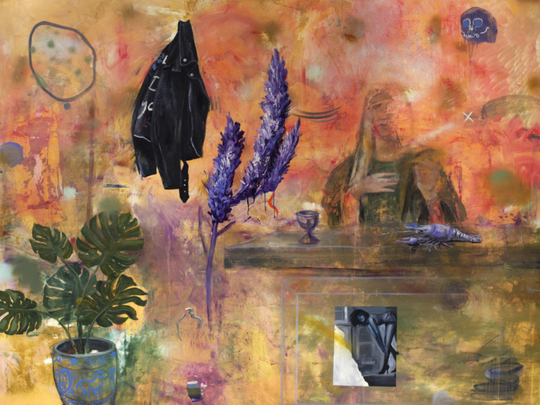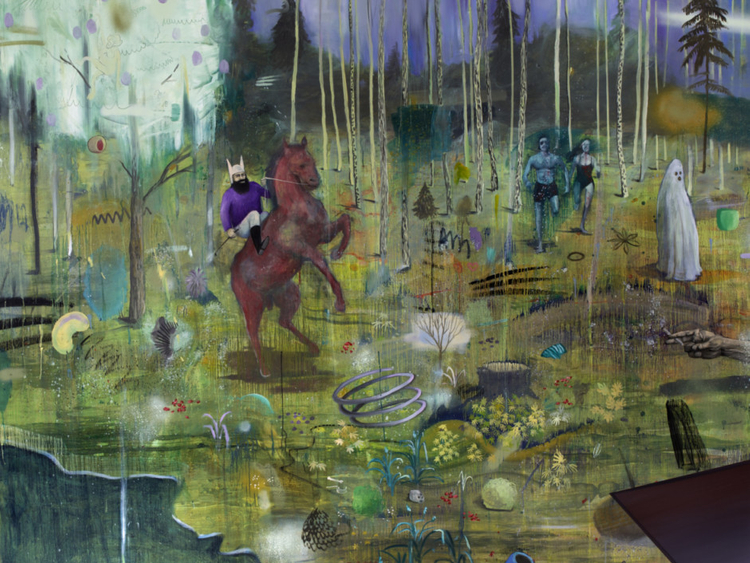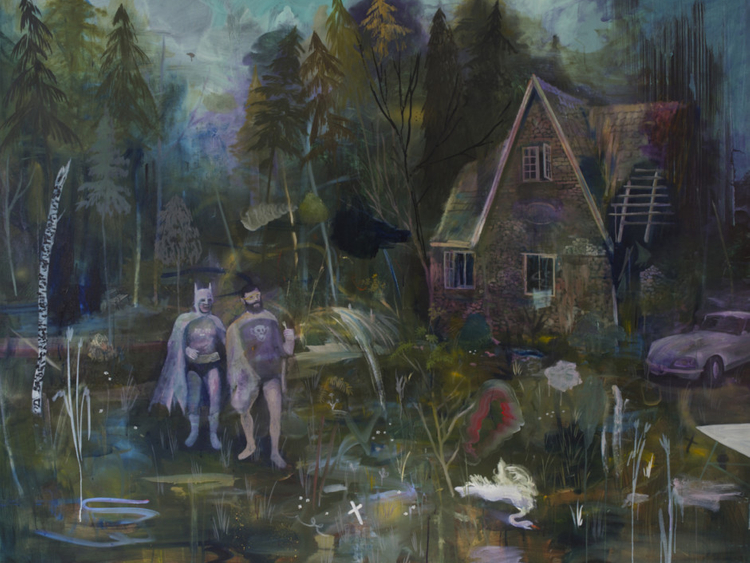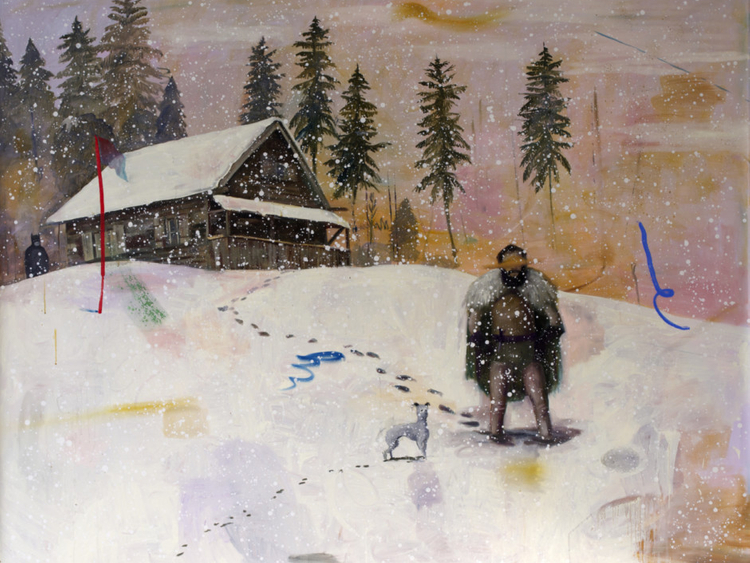
Carbon 12 gallery is hosting its 50th exhibition with the presentation of Austrian artist Philip Mueller’s latest work, “Dreams in Blue. The year Philip Mueller didn’t wake up”. The show features a series of large-scale paintings that tell stories about an imaginary gang called Black Flamingos, whose members live an idyllic life, far removed from the rat race of the real world.
The colourful paintings are named after Mueller’s favourite cafés in Vienna, and they depict the masked gang members living in beautiful Alpine mountain cabins, riding horses and picnicking in the forest. But the canvasses are also filled with sinister symbols such as skulls, crosses, ghostly figures and dead swans, and a variety of references to pop culture and art history that tell another story.
Although the paintings depict a peaceful lifestyle and return to nature that the artist and perhaps every human being fantasises about, they also allude to the impossibility of being free from the ugliness within us that is hidden behind the masks, and of escaping the reality of socio-political structures and the stressful, conflicted world around us.
Mueller spoke to Weekend Review about the visual and symbolic references in this work. Excerpts:
Who are the Black Flamingos?
I created this fictional gang, which is actually an “anti-gang”, whose members are living my ideal life. They live far away from the city in the Alpine countryside, enjoying the outdoors, doing no work, staying away from politics, conflicts, the fast pace of life and the internet. They hate arrogance and vanity, so they cover their beautiful faces with masks, and they hunt down and eat swans, because swans are a symbol of arrogance and false vanity.
Why did you include a painting on a surfboard and the jacket in the show?
I used a surfboard because it is a universal symbol of freedom or the myth of freedom. I painted a portrait of poet Lord Byron on it because he stands for everything the Black Flamingos believe in. The jacket is also a symbol of freedom in pop culture. Decorated with painted edelweiss flowers and badges from various hiker lodges in the Alps, this jacket is almost too nice for a gang, so it is actually an anti-gang jacket. The words on it say “Black Flamingos Sad Boys”, with a “not” added later before the “sad”, which hints at the dualities of existence this work deals with.
What is the meaning of the other symbols you have used in the paintings?
I have used many symbols such as Batman masks, skulls, a lobster, a monkey, figures based on Michelangelo’s sculptures and ancient frescoes, pictures from 1980s fashion magazines, characters from popular shows such as “Baywatch”, words from a song, and a movie character’s hat. These pop images draw viewers in because they are familiar and loaded with certain associations in the minds of people; but I have combined them in a new context to invite viewers to build new stories with different meanings. I consciously included some of these motifs, but some just happened subconsciously.
Why did you choose this title for the show?
During the last year I have been feeling blue and not at all happy with the work I was doing. So, I had to go into a trance-like state to free my mind and find myself again. I delved deeper into my themes and creative process because I felt I had to grow up. The story in these paintings is autobiographical. I like freedom, so it was a big step for me to have for the first time canvasses that are evenly cut and stretched. This time, I also worked very deliberately and consciously, starting with sketches, collages and paintings of the characters, the mountain lodges and the environment I wanted to portray, and have included these studies in the show. This body of work is about freedom and Utopia, which are concepts that are constantly evolving.
Jyoti Kalsi is an arts-enthusiast based in Dubai.
“Dreams in Blue. The year Philip Mueller didn’t wake up” will run at Carbon 12, Alserkal Avenue, until March 6.














